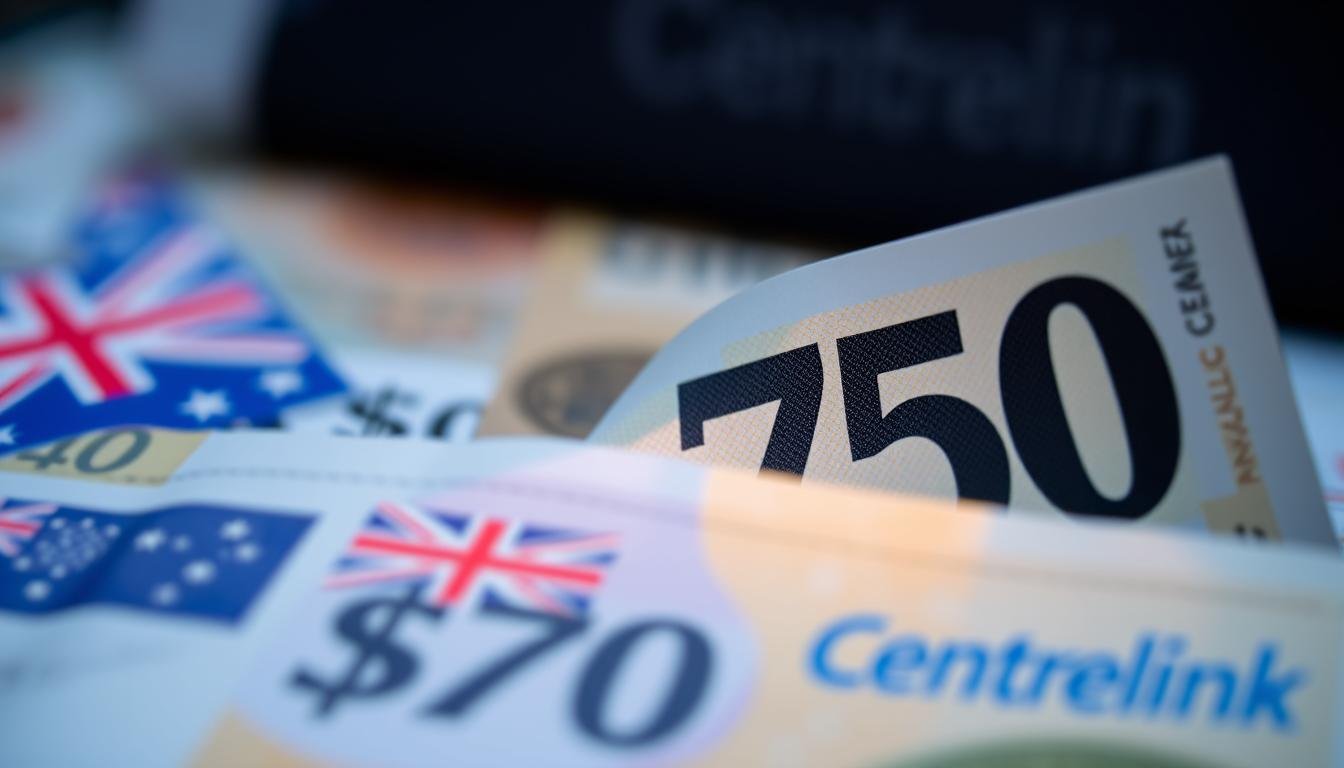Australians have lost over $134 million to scams this year. The latest scam targets those looking for government help. Scammers claim there’s a $750 “Centrelink cash relief” payment, but it’s a lie.
They also promise $890 and $1,800 payments. These scams are part of a growing trend of fake welfare scams. They aim to steal your personal info.
The phrase “$890 bonus payment Centrelink” is trending on Google. Scammers make fake websites fast, before they can be shut down. Services Australia says these claims are false and warns everyone to watch out for phishing attempts.
Major Highlights
- Scammers are promoting false claims of a $750 “Centrelink cash relief” payment and other fake government assistance amounts.
- These fraudulent schemes are designed to steal personal information and MyGov credentials from vulnerable Australians.
- Services Australia has warned the public about these scams and confirmed that the $750 and $890 payment claims are completely fake.
- Australians need to be cautious of any unsolicited offers of government cash relief, and verify the legitimacy of such claims through official channels.
- Protecting personal information and maintaining strong online security measures are key to avoiding these welfare scams.
You can also read:
Understanding the Recent Cash Relief Claims
Australians are looking for government cash support due to economic challenges. There have been nearly 10,000 monthly searches for “Centrelink One Off Payment 2024”. Some websites are spreading false information, saying people could get $250 to $3,600.
One false claim is about a new Centrelink program that could pay up to $750 every fortnight. Scammers might pick this amount because of the $750 payments during the pandemic.
There are also fake claims of $450 for those working less than 8 hours a week and $750 for those working less than 20 hours. These are part of a trend of covid-19 payment and emergency financial support scams targeting vulnerable people.
“Scammers were accessing Aussies’ Centrelink, Australian Taxation Office, and Medicare accounts by creating fake myGov accounts.”
Scamwatch data shows Aussies have lost over $134 million to scams this year. Investment scams, romance scams, and phishing scams are the most common. Fraudsters are also calling people, saying they need to pay a debt urgently.
With the cost of living going up, it’s important to be careful of these scams. Australians should only trust official government sources for real help.
The Truth Behind $750 Centrelink Cash Relief
Lately, many people have heard about a “$750 Centrelink Cash Relief” payment. It sounds like a great idea to get more money. But, it’s important to know the truth about government help.
Origin of the $750 Payment Rumour
The $750 amount comes from past pandemic relief funds given by the Australian government. Scammers use this number because it’s familiar from before. They hope to trick people into thinking it’s real.
Historical Context of Previous Payments
Earlier in the pandemic, the government gave lump-sum payments of $750 to some Centrelink recipients. This makes the current false claims seem believable. It’s easy to get fooled by these claims.
Why This Amount Was Chosen by Scammers
Scammers picked $750 because it’s big enough to grab your attention. But it’s not so high that it seems too good to be true. They want to take advantage of people’s need for help during tough times.
It’s very important to stay alert and only trust official government messages. Check information from trusted sources to avoid scams. This way, you can protect yourself from falling into their trap.
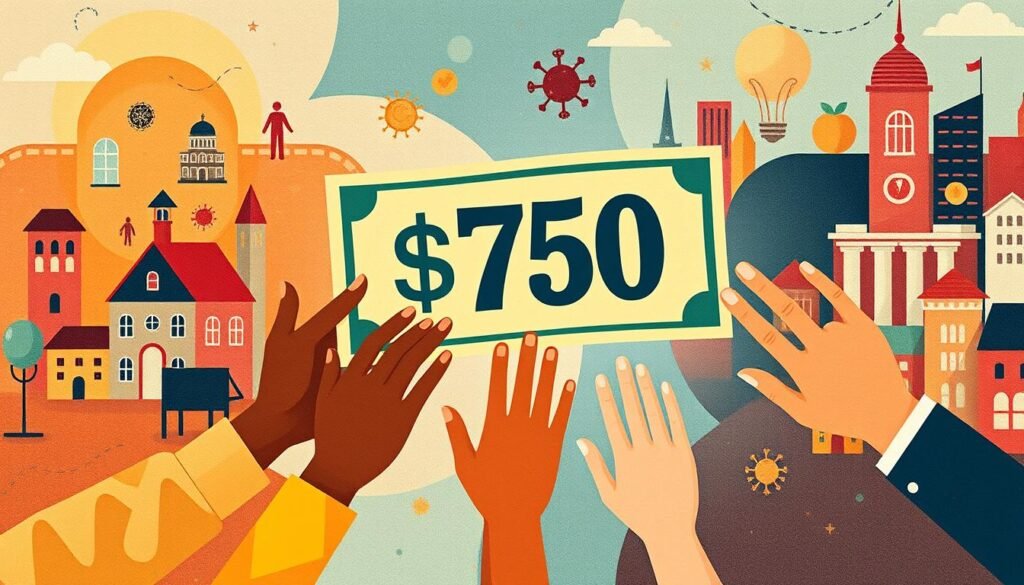
Current Government Support Programs in Australia
Australians are facing tough economic times due to the coronavirus pandemic. The government has set up various support programs to help. These programs aim to ease the financial stress on individuals, families, and businesses.
The Energy Bill Relief Fund is a $3.5 billion initiative. It offers a $300 rebate on electricity bills for households in 2024–25. Small businesses can also get a $325 rebate each year.
The government has increased income support for over 1 million Australians. This change took effect from 20 September 2023. Aged care workers will see a 15% pay rise, and 2.6 million workers will get a 3.75% wage increase from 1 July 2024.
Families are also benefiting. The maximum child care subsidy for the first child was raised to 90% in July 2023. This makes childcare more affordable and accessible.
The Homes for Australia plan is another key initiative. It aims to build 1.2 million homes by the end of the decade. This will help meet the country’s housing needs and provide more affordable options.
These are just a few examples of the welfare benefits and coronavirus economic relief programs in Australia. The government is dedicated to supporting its citizens and businesses during these tough times.
How Scammers Are Targeting Centrelink Recipients
Scammers are taking advantage of the cost-of-living crisis to target Centrelink recipients. They use fake schemes to steal personal data and money. This is happening as people need financial help more than ever.
Common Tactics Used by Fraudsters
Scammers use many tricks to get Centrelink recipients’ attention. They make fake websites and social media posts about “crisis payments” worth up to $750 or $1,800. These scams aim to get people’s personal info for identity theft and fraud.
Digital Phishing Methods
Scammers also use digital phishing to get into Centrelink, Tax Office, and Medicare accounts. They create fake myGov accounts and link to real government services. This lets them make fake claims and steal important info.
Social Media Misinformation
Scams spread fast on social media. Scammers use ads and fake influencer posts to share false info about government payments. This confuses people and takes advantage of their trust.
Scamwatch reports Aussies lost over $134 million to scams this year. Investment, romance, and phishing scams are the biggest culprits. Centrelink recipients must be careful and check the truth of any claims or offers before sharing personal info.
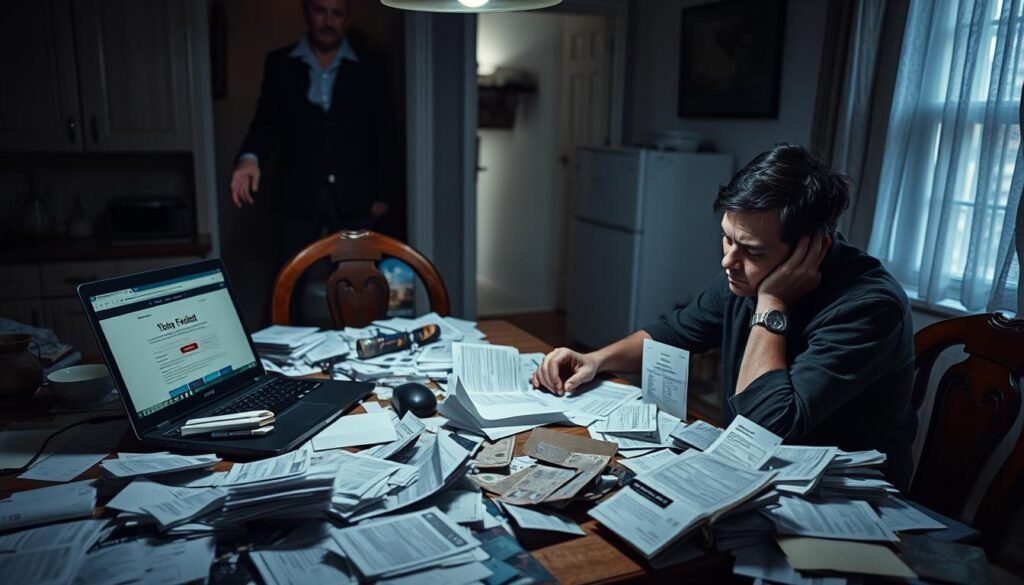
Financial scams targeting Aussies are a big problem. It’s important to know how scammers work. This way, Centrelink recipients can protect themselves and their money.
Identifying Legitimate Government Communications
In the ongoing debate about government assistance and welfare benefits, it’s key for Aussies to know real government messages from fake scams. Services Australia, the agency for social security payments, stresses using only official channels for payment info.
Real government sites in Australia have the “.gov.au” domain. Services Australia advises visiting these sites, like the Centrelink portal, for payment updates. Legit agencies won’t call or message you out of the blue, asking for quick action to avoid trouble.
- Watch out for calls saying you owe money or must pay now to avoid legal trouble.
- Check if info is real by calling Services Australia directly through official channels.
- Be careful of scammers pretending to be government officials or spreading false info on social media.
Knowing the signs of real government messages helps Aussies avoid falling into welfare benefits scams. These scams can cause big financial and emotional harm.
“Scammers intentionally manipulate and deceive individuals into giving them money or personal information.”
In 2023, over 72,500 scams were reported by Aussies aged 65 and older, with losses over $120 million. The most common scams were investment, romance, and phishing, targeting the vulnerable through emails, texts, and calls.
By staying alert and checking the realness of government messages, Aussies can protect their money and avoid welfare benefits scams.
Real Cost of Living Support Available in 2024
Australians are facing higher living costs, and the government is stepping in. They’ve set up state-specific relief programs and Centrelink payments. These are designed to help with income supplement and financial hardship aid. They aim to ease the pressure on those who need it most.
State-Specific Relief Programs
Depending on where you live, you might get help with living costs. For instance, in New South Wales, there’s the Energy Rebate. It gives up to $250 to help with bills.
In Victoria, the Power Saving Bonus offers $250 to reduce energy costs. Western Australia has a Cost of Living Assistance payment of $600 for eligible seniors and concession card holders. Queensland’s Utility Rebate Scheme gives $175 a year to help with bills.
Genuine Centrelink Payment Options
Centrelink, the Australian government’s social services agency, has many payments to help. The Crisis Payment is one. It’s for those facing exceptional situations like:
- Family violence
- Natural disasters
- Major health crises
- Release from institutions
To get a Crisis Payment, you must meet certain criteria. You can apply online or by contacting Centrelink.
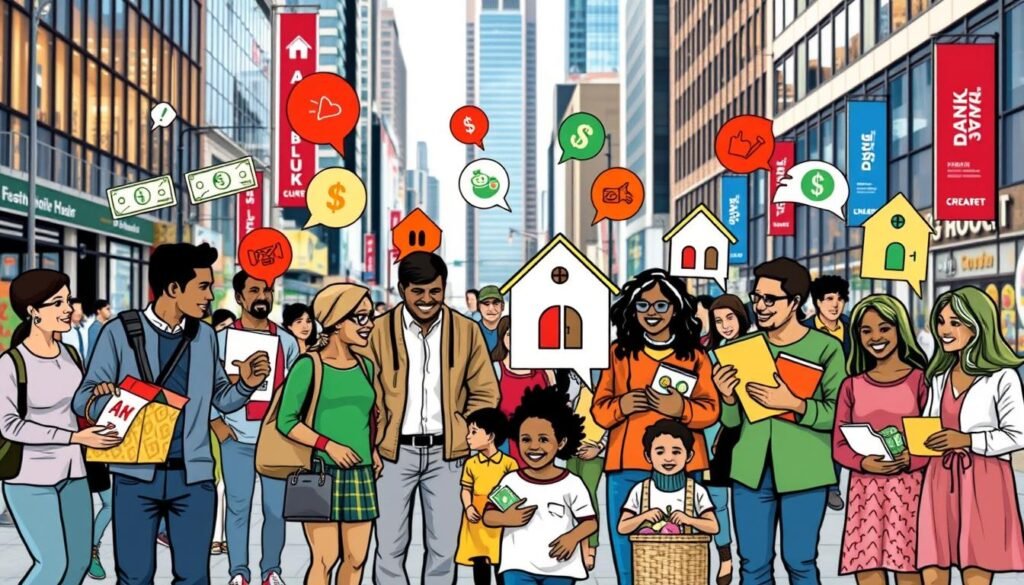
“The government is committed to supporting Australians during these challenging times. We encourage everyone to explore the available state-based and Centrelink programs to find the assistance that best fits their needs.”
Keep in mind, the $750 Centrelink Cash Relief Payment’s reliability is uncertain. Always check official government sources for the latest on cost-of-living support.
The Rise of Clickbait Welfare Scams
In today’s digital world, scams about covid-19 payment and emergency financial support are on the rise. Scammers are targeting vulnerable Australians with fake promises of government money, like the “$750 Centrelink Cash Relief”.
These scams use tricks to trick people, including fake websites and social media ads. They even use real Australian Business Numbers (ABNs) to look legit. But, they’re created so fast that authorities can’t keep up, putting many Aussies at risk.
- Scammers are taking advantage of people’s need for extra money during hard times, like the COVID-19 pandemic, to spread false info about government payments.
- Fake websites and social media ads try to look like official government messages, making people believe in the “$750 Centrelink Cash Relief” payment.
- Using names like “.org” or “.org.au” makes these scams seem real, making it hard for people to tell what’s true and what’s not.
Australians need to be careful and check if any government financial help claims are true before falling for these clickbait welfare scams. By staying informed and using official government sources, people can protect themselves from these scams.
Knowing how scammers work and being aware of real covid-19 payment and emergency financial support options helps Aussies make smart choices. This way, they can avoid falling into the trap of these common welfare scams.
Protecting Your MyGov Credentials
Scammers are targeting government programs, so it’s key to keep MyGov safe. Services Australia suggests using a verbal password for extra security. Two-factor authentication also helps, making it tough for scammers to get into your account.
Security Measures to Implement
- Enable two-factor authentication on your MyGov account to prevent unauthorized access.
- Create a unique verbal password that you can use to verify your identity when accessing your account.
- Be cautious when entering personal data into online calculators or eligibility checkers, as scammers can use this information to breach your accounts.
Two-Factor Authentication Importance
Scammers are targeting MyGov accounts, sometimes locking victims out and making fake claims for welfare benefits or government assistance. Two-factor authentication adds a layer of security. It requires an extra step, like a one-time code sent to your mobile, to confirm your identity before you can log in.
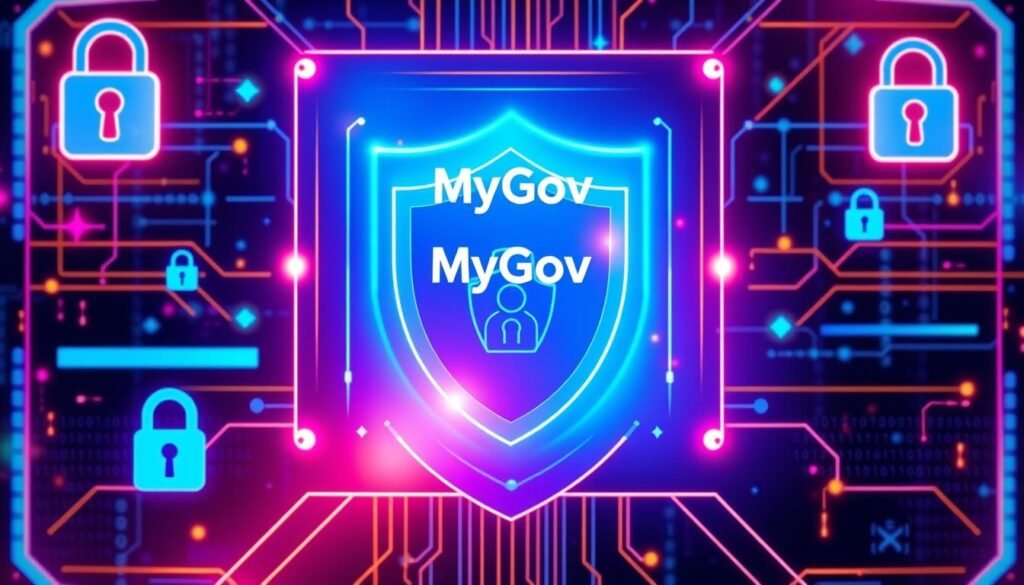
By securing your MyGov credentials, you can avoid falling victim to these scams. Always remember, the government won’t ask for your personal info via unsolicited calls, emails, or social media.
Services Australia’s Official Response
Services Australia is in charge of Centrelink and other welfare programs. They’ve quickly spoken out about the $750 cash relief payment claims. They warn Aussies about false info on unofficial websites and social media.
Services Australia says there’s no “bonus payment” or “crisis payment” for cost-of-living help. They tell people to be careful about claims of special Centrelink payments. These are usually scams trying to get your personal info or money.
To spot real government messages, Services Australia has a page on their website. It lists scams and fraud attempts, including the $750 payment scam on social media and shady websites.
“We want to be very clear – there is no $750 payment or bonus being offered by Centrelink or the Australian Government. These claims are false and designed to steal your personal and financial information.”
Services Australia advises checking Centrelink payment info through official channels. Don’t rely on unverified sources online or on social media. By being careful, Aussies can avoid falling for centrelink cash relief and crisis payment scams.
Impact of False Payment Claims on Vulnerable Australians
Scammers are taking advantage of Aussies’ financial struggles, affecting the most vulnerable. Older Australians are being targeted with fake “Centrelink cost of living” payments. This leads to big financial and emotional losses.
Financial and Emotional Consequences
In 2023, Scamwatch reported over 72,500 scams against Australians aged 65 and over. They lost more than $120 million. Scams include investment, romance, and phishing, often through emails and phone calls.
These scams make people feel ashamed and guilty. Scammers target older Australians, who may have saved a lot of money. They offer fake Centrelink payments to trick victims, causing big financial and emotional problems.
Community Support Resources
It’s important for vulnerable Australians to have support against scams. Scamwatch helps by teaching how to spot and avoid scams. They encourage people to stay alert and protect themselves.
Community groups and government services also help those hit by scams. They offer support to help people feel safe again. This helps them rebuild trust and deal with the emotional and financial damage.

“Scammers are relentless in their pursuit of vulnerable Australians, but together, we can overcome these challenges and safeguard our community’s financial well-being and emotional resilience.”
Genuine Crisis Payment Options Through Centrelink
Centrelink offers real Crisis Payments for Australians in financial trouble. These payments are one-off and tax-free. They help with big issues like family violence, natural disasters, and health crises.
To get a Centrelink Crisis Payment, you must meet certain rules. You need to have had a big change in your money situation. Or, you might need help to start a new life after leaving a violent situation.
- Family and domestic violence
- Natural disasters
- Major health crises
- Release from prison or psychiatric facilities
- Other extreme circumstances
Applying for a Centrelink Crisis Payment is easy. You can do it on the Services Australia website. Just pick the right payment and show you’re eligible with some documents.
| Crisis Payment Type | Eligibility Criteria | Payment Amount |
|---|---|---|
| Family and Domestic Violence | Leaving a situation of family and domestic violence | One week’s payment of the recipient’s basic income support payment |
| Natural Disaster | Being affected by a declared natural disaster | One week’s payment of the recipient’s basic income support payment |
| Major Health Crisis | Experiencing a major personal health crisis | One week’s payment of the recipient’s basic income support payment |
Remember, the Centrelink Crisis Payment is a real government program. If you get calls about “$750 Centrelink Cash Relief”, be careful. Always check with Services Australia to make sure you’re getting real help.
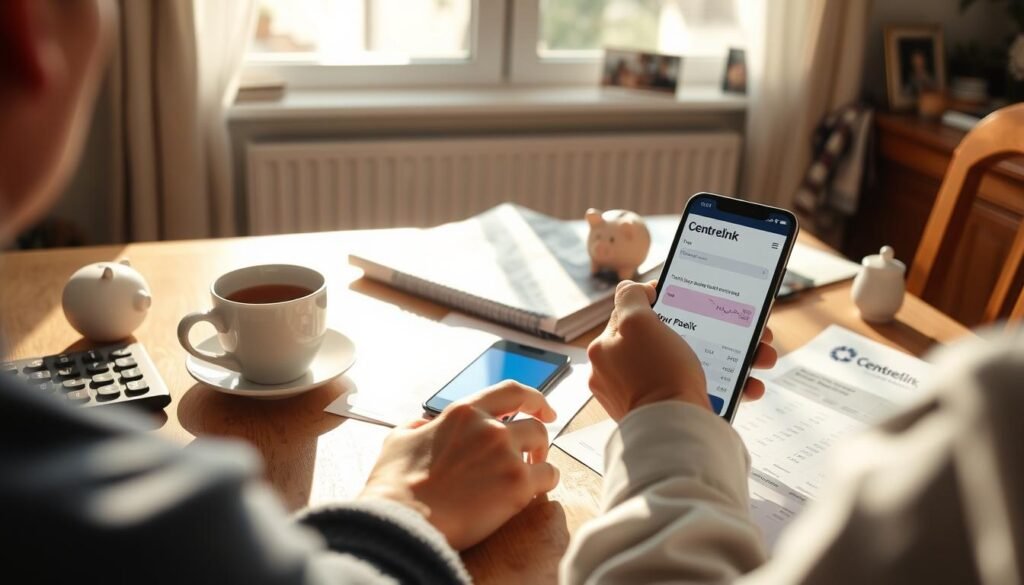
“The Centrelink Crisis Payment is a lifeline for Australians facing unexpected financial hardship due to exceptional circumstances. It provides immediate relief and support when people need it most.”
Website Verification: Spotting Fake Government Sites
In today’s digital world, Aussies need to be careful when looking for welfare benefits and government help. Scammers are getting smarter, making fake websites that look like real government ones. They try to trick people into giving them personal info.
Domain Authentication Tips
To check if a government website is real, look at the domain. Real government sites in Australia always end with “.gov.au”. If a site says it’s for welfare or government help but doesn’t have this, be careful.
Red Flags to Watch For
- Non-functioning buttons or links: Scam sites often have poor web design and functionality, with broken elements that don’t work as expected.
- AI-generated content: Phrases like “Picture this” or “Rich tapestry” can be a sign of AI-generated copy, which is often used to create the illusion of legitimacy.
- Unrealistic claims: Be wary of websites promising unusually high or “one-off” government payments, such as the recent $890 “bonus” scam.
Just because a website looks good doesn’t mean it’s real. Scammers can make fake sites that look like the real thing. But, if a site doesn’t work right, it’s a big warning sign.
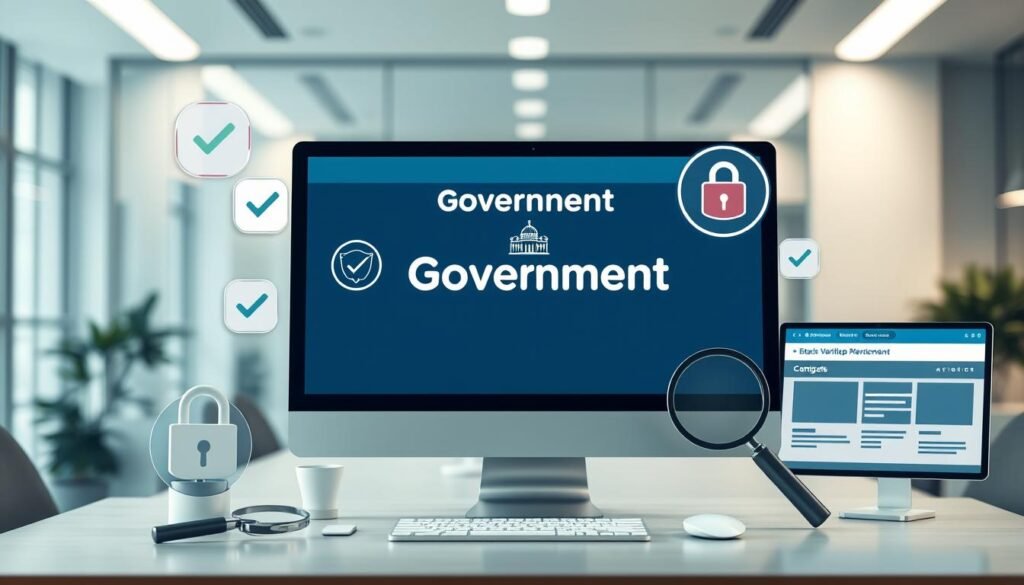
By following these tips and being careful, Aussies can avoid falling for welfare and government assistance scams. Always check if a website matches official government domains.
Financial Scam Statistics in Australia
Scammers are taking advantage of the pandemic to trick Australians. They promise fake pandemic relief funds to those who are vulnerable. Reports show that over $134 million has been lost to scams this year. The biggest losses are from investment scams, followed by romance and phishing scams.
Phishing scams, like those about fake Centrelink payments, are also causing a lot of harm. The Commonwealth Ombudsman says hackers are using Medicare and Centrelink accounts on the myGov platform. They create fake accounts and make false claims.
Scammers are making false promises of payments to Centrelink recipients. They claim payments of $1,490 and even up to $2,100. They also promise tax refunds of $4,529 and parenting payments of $915 on scam websites.
Some scam sites claim there are bonus Centrelink payments of $750 and $1,800. But Services Australia says these are not true. Real government websites end in ‘.gov.au’, like servicesaustralia.gov.au and my.gov.au.
Scammers try to get personal info through social media, texts, and emails. They pretend to be government officials. People should be careful, check with official sources, and report scams to protect their info.
“Australians have lost more than $134 million to scams this year, with phishing scams representing the third-highest losses.”
Scammers make fake websites and social media posts about non-existent payments. They promise amounts from $750 to $1,800. The phrase ‘$890 bonus payment Centrelink’ is also trending in Google searches.
Scammers make fake websites faster than regulators can shut them down. It’s important for Australians to stay alert and check any government payment claims. Services Australia suggests setting up a verbal password to protect accounts and prevent unauthorized access.

Steps to Report Suspicious Payment Claims
If you spot any dodgy claims about Centrelink cash relief or welfare benefits, act fast. The first thing to do is report it to Services Australia. They have a team ready to check out fraud and make sure payments are real.
You can also report it on the Scamwatch website. It’s a great place to learn about scams and how to avoid them. Scamwatch helps you stay safe from financial scams.
Be careful of calls, messages, or emails that seem too good to be true. Scammers might say you’re owed money from Centrelink. They try to rush you into action, saying you’ll face legal trouble if you don’t act fast. If you get one of these, just hang up. Then, call Services Australia directly to check if it’s true.
FAQs
The $750 Centrelink cash relief payment is a scam. Services Australia says it’s a clickbait scam. There’s no real payment available.
Tell Services Australia about any suspicious claims right away. Call them to check any payment info not on official sites. Use Scamwatch to report and stay updated on scams.
Watch out for sites not ending in “.gov.au”. They’re likely scams. Look for non-working buttons or links, and AI-generated content.
Even if a site works, it’s not always real. But, if it doesn’t work, it’s probably a scam.
Be careful of unsolicited calls. Hang up on any suspicious calls.
Centrelink has Crisis Payments for sudden financial problems. This includes family violence, natural disasters, major health issues, or release from institutions. These payments need specific criteria to qualify.
Apply for Crisis Payments on the Services Australia website.
Real government sites end with “.gov.au”. Services Australia only shares payment changes on official sites and social media. Call Services Australia to check any payment info not on official sites.
Scammers use fake websites and social media to trick people. They offer “eligibility check” tools to steal personal info. They also hack into Medicare and Centrelink accounts.
Phishing scams are common. They use social media to spread false info about payments.
Yes, there are real government help programs. For example, South Australia’s Cost of Living Concession gives $255.60 monthly. Plus, a one-off $243.90 in June 2024.
Queensland offers $1,000 off electricity bills and $300 extra each quarter. New South Wales gives $300 energy rebates in $75 parts each quarter.
